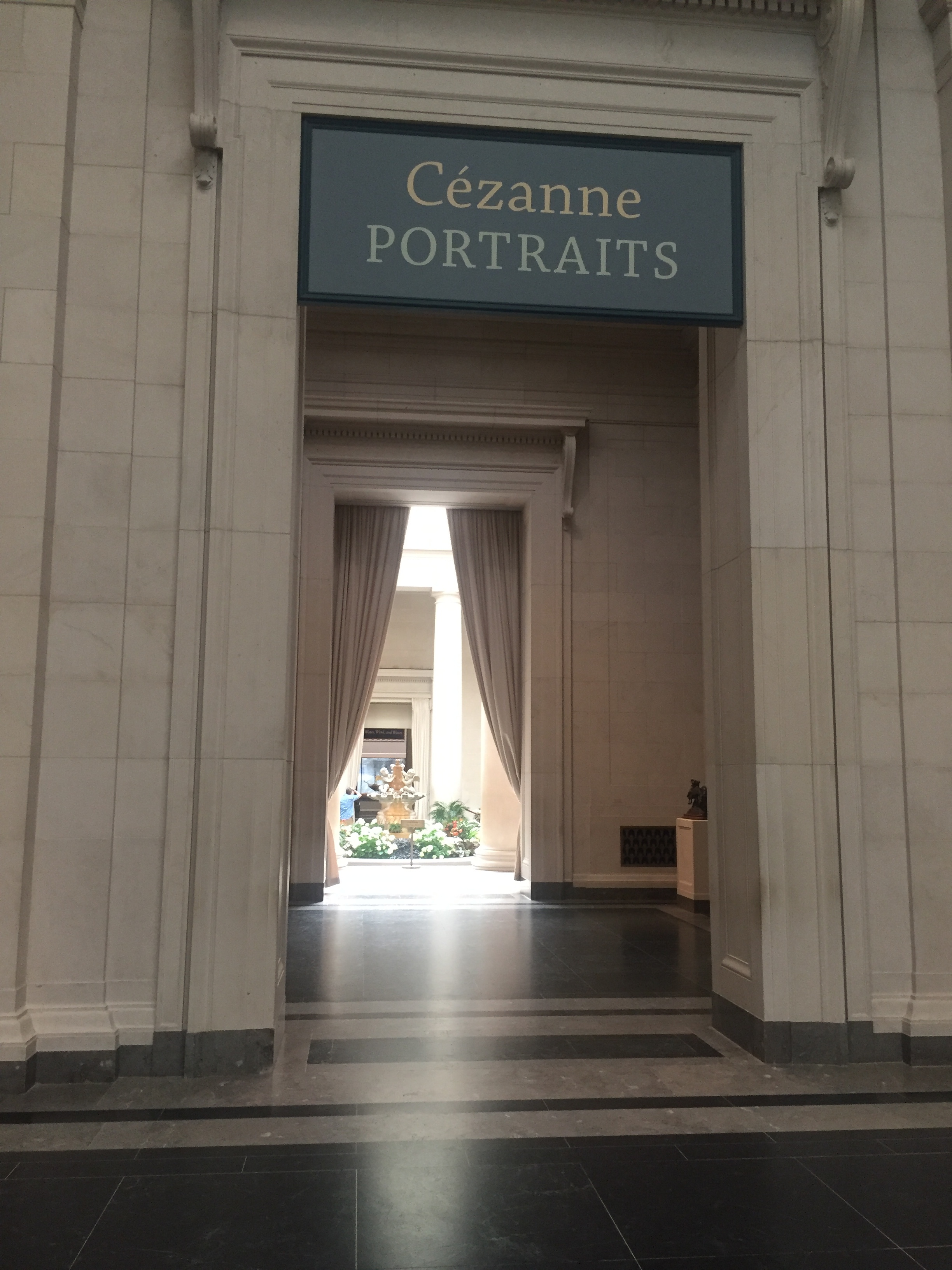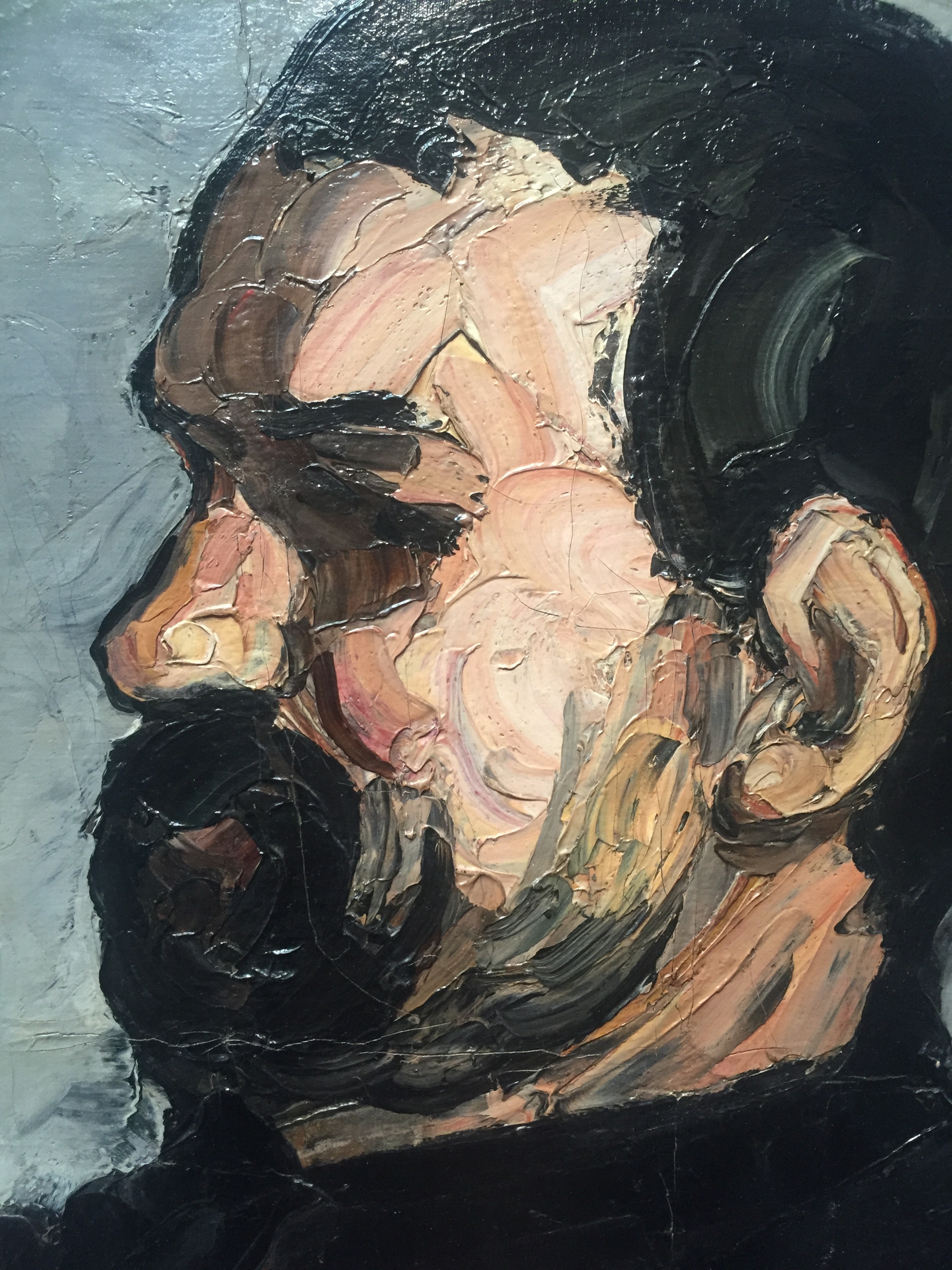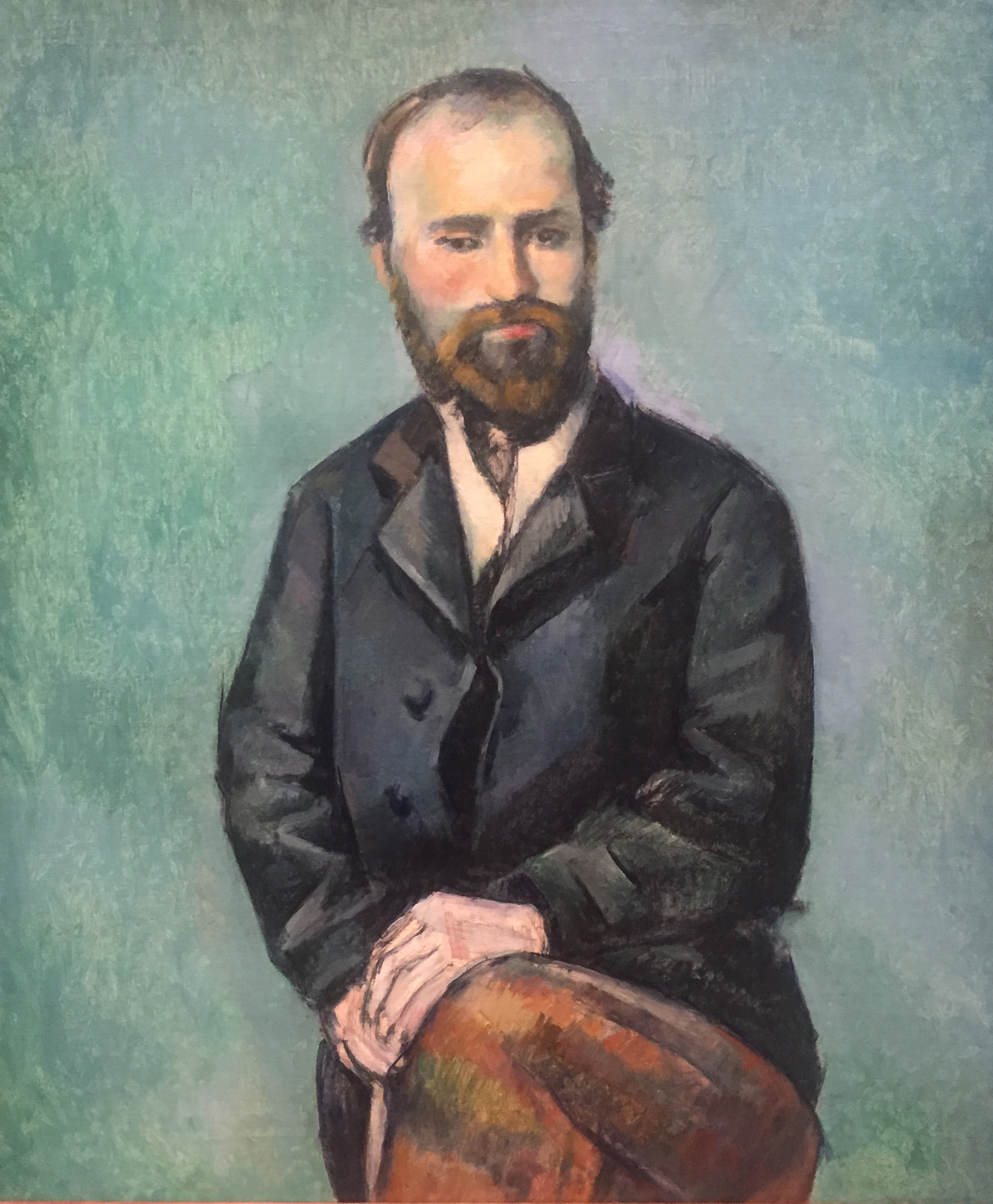This show opens with a little room full of early portraits of Cézanne's family. Cézanne's uncle acts as the star sitter, but also looks like a man who never planned on being painted. He seems to want to do his nephew a favor. It's hard to tell. Overall the uncle either has RBF or just can barely tolerate sitting still.
These are Cézanne's earliest portraits, and by Cézanne's own standards they are incredibly weird Cézanne paintings, but stellar stand-alone paintings. I doubt that I would have been able to tell you that these are Cézanne's. Like Georgia O' Keefe's Kachina dolls, or Wyeth's Helga paintings - they're just really weird paintings compared to the rest of the painter's work. This weirdness or difference also makes these impasto portraits highly modern - the artist is allowed to grow and assume a different style in the next decade of his life. Cézanne eventually painted portraits and all of his work in a flat-brushed, unbodied way.
You can see the air bubbles in each swipe of oil, and Cézanne lightly brushes surprising colors into the face - lime green, bright pink, magenta, and the sort of green that emerges when you mix black with too much white. This painting was the most unusual Cézanne I've ever seen - instead of lightness or airiness, it's black and stark. Instead of flat paint, it's heaped onto the canvas like butter. I really am not sure why Cézanne would have parted from this style other than that it is a difficult style (it's much easier to paint flat than thick) or that maybe the Uncle didn't like these portraits so much.
His eye sockets are convex, and his nose shines with a dab of white paint for added dimensionality. His mouth is utterly lost in his black beard.
It's possible that the first gallery of this show was the most stunning, and every room after that contains the Cézanne we know and love, the same brilliant achievements but in Cézanne's more knowable style - self portraits, the artist's son, the artist's secret wife, the artist's unnamed gardener, the boy in the red waistcoat, a man in his study, and a man smoking. After those impasto early portraits of Cézanne's uncle, the rest of the show struck me as studied, collected, and interested in color over volume.
In this portrait of a man in his study, the pages of the man's notebooks and tablets take on a life of their own, with multicolor swatches of paint composing the pages like a quilt. I doubt this man's accounting tables were actually so exciting or vibrant, but this is just what Cézanne does - he finds the color within the color.
If the man's hand above were truly as blue as it is in the painting, we'd have to say that this was a very bruised hand. Instead, given the other dashes of color we are able to forgive the blueness of the hand. It's probably just a shadow of liberty.
Still, I couldn't get over the amount of color in white pages of books in the study portrait. In the pages on the right side of the photo above, to take inventory, we have pink, yellow, gray, teal, green, orange, blue, purple, and an edge of sienna. Who on Earth aside from Cézanne can see so many colors in a white page? For many impressionists, there was no using black. For Cézanne it seems to be no black and no gray.
This portrait, titled "The Smoker" strikes me as the most realistic of Cézanne's portraits, and possibly any of his works. The man's coat and hat seem to fit well. His hand, configured with accuracy, cradles his face. We have a stylistic quantum leap from the earlier portraits of Cézanne's uncle to this portrait. Black doesn't seem to touch this sitter - while his coat may have been black or dark brown, it is every color in the portrait below.
Blue, green, red, purple, orange, bright pink, gray, violet - these are all the colors of the smoker's coat.
One of the more outstanding paintings outside of the first gallery was this self portrait:
I'm not even sure what is happening with Cézanne's leg here - it's much like the tables where his still lives are placed. If you end up looking at Cézanne's leg instead of Cézanne's face, you sort of get confused, your brain gets lazy, and you have to go back to looking at Cézanne's face. The same mechanic happens with a Cézanne still life - if you look at the table, you're missing the nectarines.
The placard outside of the portrait gallery encourages viewers to see the other Cézanne pieces in the National Gallery in addition to the portraits. The show's overall statement is also correct in assessing that Cézanne was probably better at painting fruit than faces, yet, I'll go to bat for Cézanne's ability to fill the human face with the same wild ranges of color as the nectarines.
Here is a Cézanne from the permanent collection:
Looking at just the cloth in this still life, we've seen this before. The blues, bright green, purple, gray, and pink were also in the faces of Cézanne's portraits. For Cézanne, painting is a matter of how many colors you can see in a gray area.


















